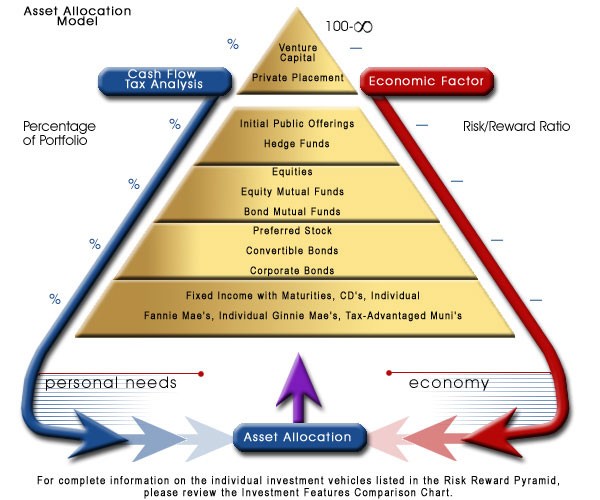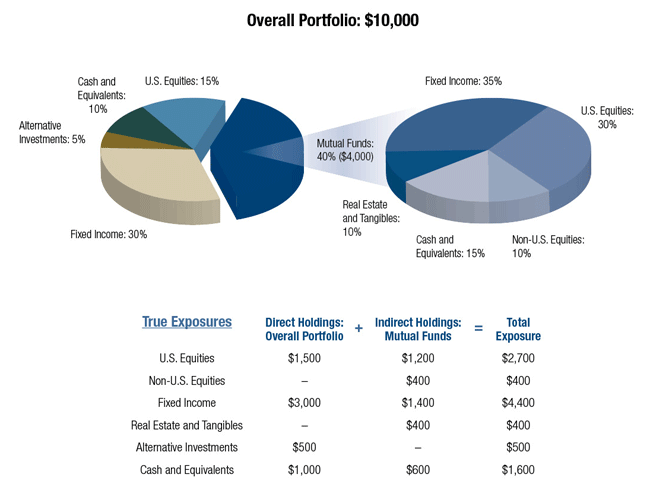Asset allocation
Post on: 4 Апрель, 2015 No Comment

successful asset allocation
The first generation of asset allocation funds utilized the same investment mix regardless of investor age or circumstances. Today, asset allocation funds are more targeted in their approach. There are almost as many asset allocation strategies as there are mutual funds. Typical asset allocation calls for 60% in stock funds and 40% in bond funds. From here, percentages are altered by many factors, including age, time horizon, purpose of investing, work status, need for investment income, lump-sum investment or long-term periodic investing and the degree to which the investing goals have been reached.
We believe these various considerations will dictate a portfolio makeup ranging from a most aggressive stock / bond ratio of 80/20 to a conservative stock / bond ratio of 20/80. While many investors and advisors alike construct senior portfolios comprised strictly of fixed income investments, we believe that even the most conservative income-oriented elderly investor needs purchasing power protection, which traditionally comes from owning equities (stocks) not debt (bonds).
In November 1988, long before they became fashionable, AFS president Jeff McTague created four distinct investment portfolios to specifically track the investor lifecycle. Through good times and bad, they have performed quite well.
Accumulator Portfolio
Transition Portfolio
Retirement Portfolio

Senior Retirement Portfolio
Also in this section, you will find researched reports on:
- The current allocation of the mutual fund marketplace, showing where investors are investing and where the mutual fund managers are investing ,
- Previous years breakdowns show the changing face of the mutual fund marketplace,
- Callan-type charts depicting the changing fortunes of various investment categories and types,
- Historical look at the benefits of being allocated in a bear market,
- The effects of adding international exposure to a portfolio,
- Historical look at various asset allocation models including lifecycle models
- a performance analysis of your firms in-house asset allocation models BY REQUEST
- Support for the soothing power of allocation even in a portfolio of the most aggressive sector funds.
Subscriber-Only Access to the Following Research Reports:














